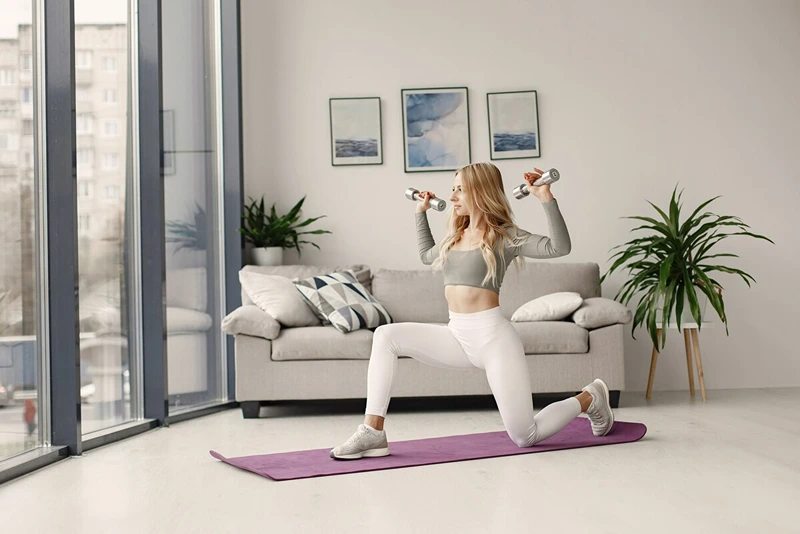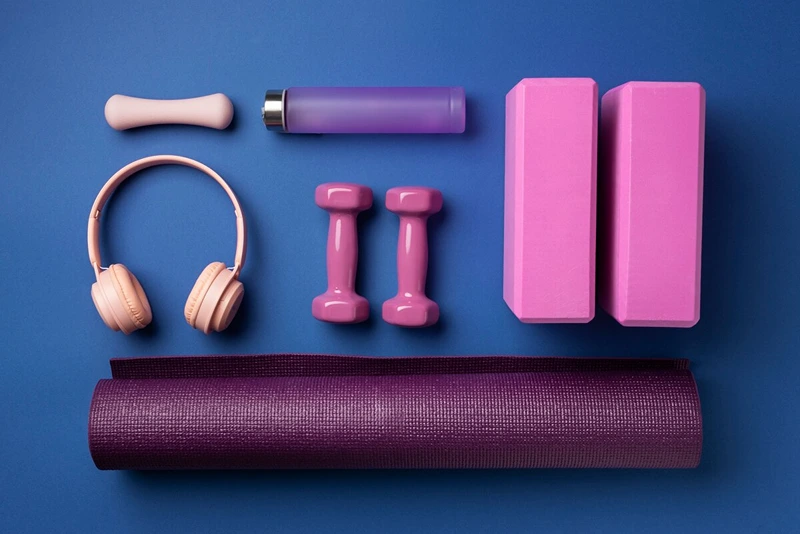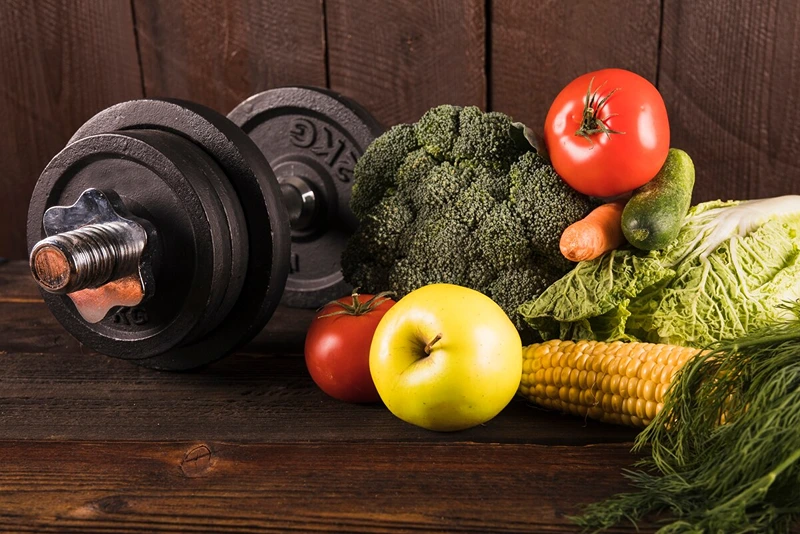In today’s fast-paced world, finding time to hit the gym can be a challenge. That’s where home fitness programs come in, offering the flexibility and convenience needed to maintain a healthy lifestyle. At Rac Women, we understand the importance of staying fit from the comfort of your home. We’ve crafted a comprehensive guide to help you navigate the world of home workouts, ensuring you can stay on top of your fitness goals without stepping out the door.
In This Article
Understanding Home Fitness Programs

The Evolution of Home Workouts
The concept of home fitness has transformed dramatically over the years. What started with videotaped workouts has now evolved into a digital fitness revolution. With the advent of streaming services and fitness apps, a plethora of workout programs are now accessible with just a few clicks.
Why Choose Home Workouts?
- Convenience: Work out on your own schedule without the commute.
- Privacy: Exercise without the self-consciousness some feel at the gym.
- Customization: Tailor your workouts to your specific needs and preferences.
Types of Home Fitness Programs
Cardio-Based Workouts
Cardio workouts are the cornerstone of many home fitness programs. They are designed to increase heart rate and burn calories, which is essential for weight loss and cardiovascular health.
Popular Cardio Workouts:
- Boxing and Kickboxing: These high-intensity workouts improve endurance and coordination.
- Dance Fitness: A fun way to get your heart pumping while learning new dance moves.
- HIIT (High-Intensity Interval Training): Short bursts of intense exercise followed by rest periods.
Strength Training at Home
Building muscle is key to boosting metabolism and improving overall strength. With programs focused on bodyweight exercises or minimal equipment like dumbbells and resistance bands, you can achieve significant gains.
Effective Strength Training Techniques:
- Supersets: Alternating sets of two different exercises with no rest in between.
- Circuit Training: Performing a series of exercises back-to-back with minimal rest.
Yoga and Flexibility
Yoga programs are a staple in the home fitness realm, promoting flexibility, strength, and mental well-being. They range from gentle stretches to more challenging poses, catering to all levels of fitness.
Dance and Movement
Incorporating dance into your fitness routine can make exercise feel more like a party than a chore. Programs like Zumba and The Sculpt Society combine music with movement for an enjoyable workout experience.

Selecting the Right Program for You
Assessing Your Fitness Level
Before diving into a home fitness program, it’s crucial to evaluate your current fitness level. This will help you choose a program that challenges you without being overwhelming.
Fitness Level Categories:
- Beginner: Focus on foundational movements and gradual progression.
- Intermediate: Introduce more complexity and intensity to your workouts.
- Advanced: Incorporate high-intensity and complex movements for peak performance.
Setting Personal Goals
Your fitness journey should be guided by clear, achievable goals. Whether it’s weight loss, muscle gain, or improving endurance, your objectives will dictate the structure of your workout program.
Goal-Setting Tips:
- Be Specific: Instead of a vague goal like “get fit,” aim for specific targets such as “run a 5K” or “do 20 push-ups”.
- Track Progress: Keep a workout log to monitor improvements and stay motivated.
The Importance of Community
A supportive community can be the difference between sticking with a program and giving up. Online fitness communities offer camaraderie and encouragement, keeping you accountable and motivated.
Equipment and Space Considerations

Minimal Equipment Workouts
Not everyone has space for a full home gym, but that doesn’t mean you can’t get a great workout. Many programs require nothing more than your bodyweight or a couple of resistance bands.
Equipment Essentials:
- Dumbbells: Versatile and compact, they can be used for a variety of exercises.
- Yoga Mat: Provides cushioning and grip for floor exercises and yoga poses.
- Resistance Bands: Lightweight and portable, they add resistance to workouts without needing heavy weights.
Maximizing Your Space
Even in a small apartment, strategic arrangement of furniture can create enough space for a workout. The key is to have enough room to move freely without restriction.
Space-Saving Tips:
- Designate a Workout Area: Clear a specific area in your home that is reserved for exercise.
- Use Wall-Mounted Equipment: Items like pull-up bars can be installed in doorways or on walls to save floor space.
Structuring Your Workout Routine
Creating a Balanced Schedule
A well-rounded fitness routine includes a mix of cardio, strength, and flexibility training. Spread these throughout the week to allow for recovery and prevent burnout.
Sample Weekly Schedule:
| Day | Workout Type |
|---|---|
| Monday | Cardio |
| Tuesday | Strength Training |
| Wednesday | Yoga/Flexibility |
| Thursday | Rest or Light Activity |
| Friday | HIIT |
| Saturday | Strength Training |
| Sunday | Rest or Active Recovery |
Incorporating Rest and Recovery
Rest days are just as important as workout days. They allow your muscles to recover and grow stronger.
Recovery Strategies:
- Active Recovery: Light activities like walking or gentle stretching can aid recovery.
- Sleep: Ensure you get adequate sleep to support muscle repair and recovery.
Tracking Progress
Keeping a record of your workouts helps you see how far you’ve come and where you need to focus your efforts.
Tracking Methods:
- Fitness Apps: Many apps offer workout logging features and progress tracking.
- Workout Journals: A simple notebook can be used to record workouts and reflect on progress.

Nutrition and Home Fitness
The Role of Diet in Achieving Fitness Goals
Your fitness regimen is incomplete without considering the fuel you give your body. Nutrition is the foundation upon which fitness is built.
Nutrition Essentials:
- Proteins: Essential for muscle repair and growth.
- Carbohydrates: Provide energy for your workouts.
- Fats: Necessary for hormone production and joint health.
Nutrition Table:
| Nutrient | Function | Recommended Sources |
|---|---|---|
| Protein | Muscle repair | Chicken, tofu, legumes |
| Carbs | Energy | Whole grains, fruits, vegetables |
| Fats | Hormone production | Nuts, avocados, olive oil |
Meal Planning and Prep
Planning your meals can help you stay on track with your fitness goals. It ensures you have healthy options on hand, preventing the temptation of less nutritious choices.
Meal Prep Tips:
- Batch Cook: Prepare large portions of meals to save time during the week.
- Snack Smart: Keep healthy snacks readily available to avoid unhealthy snacking.
Overcoming Challenges and Staying Committed
Dealing with Plateaus
It’s normal to hit a plateau in your fitness journey. The key is to mix up your routine to continue challenging your body.
Strategies to Overcome Plateaus:
- Increase Intensity: Add more weight or reps to your workouts.
- Change Your Routine: Try new exercises to keep your muscles guessing.
Adapting Workouts to Changing Needs
Your body changes, and so should your workouts. Whether it’s due to aging, injury, or lifestyle changes, being adaptable is crucial.
Adaptation Strategies:
- Low-Impact Options: Great for those with joint issues or returning from injury.
- Pregnancy Workouts: Tailored exercises for pre and postnatal women.
Frequently Asked Questions
Essential Home Workout Equipment:
- A set of dumbbells
- Resistance bands
- A yoga mat
Motivation Tips:
- Set clear, achievable goals
- Track your progress
- Join online fitness communities for support
Bodyweight Exercises for a Full-Body Workout:
- Push-ups
- Squats
- Lunges
- Planks
Routine Change Frequency:
- It’s recommended to change your workout routine every 4-6 weeks to prevent plateaus and maintain progress.
Weight Loss and Home Workouts:
- Absolutely. With the right intensity and nutrition, home workouts can be highly effective for weight loss.
Ellen Crandall
Meet Ellen, your fitness compass in the world of athletics, training, and gym culture. With a commitment to well-being and a penchant for all things workout-related, Ellen is here to guide you on your journey to a healthier, fitter you. Join the fitness revolution, led by Ellen, and embrace the power of an active lifestyle.




